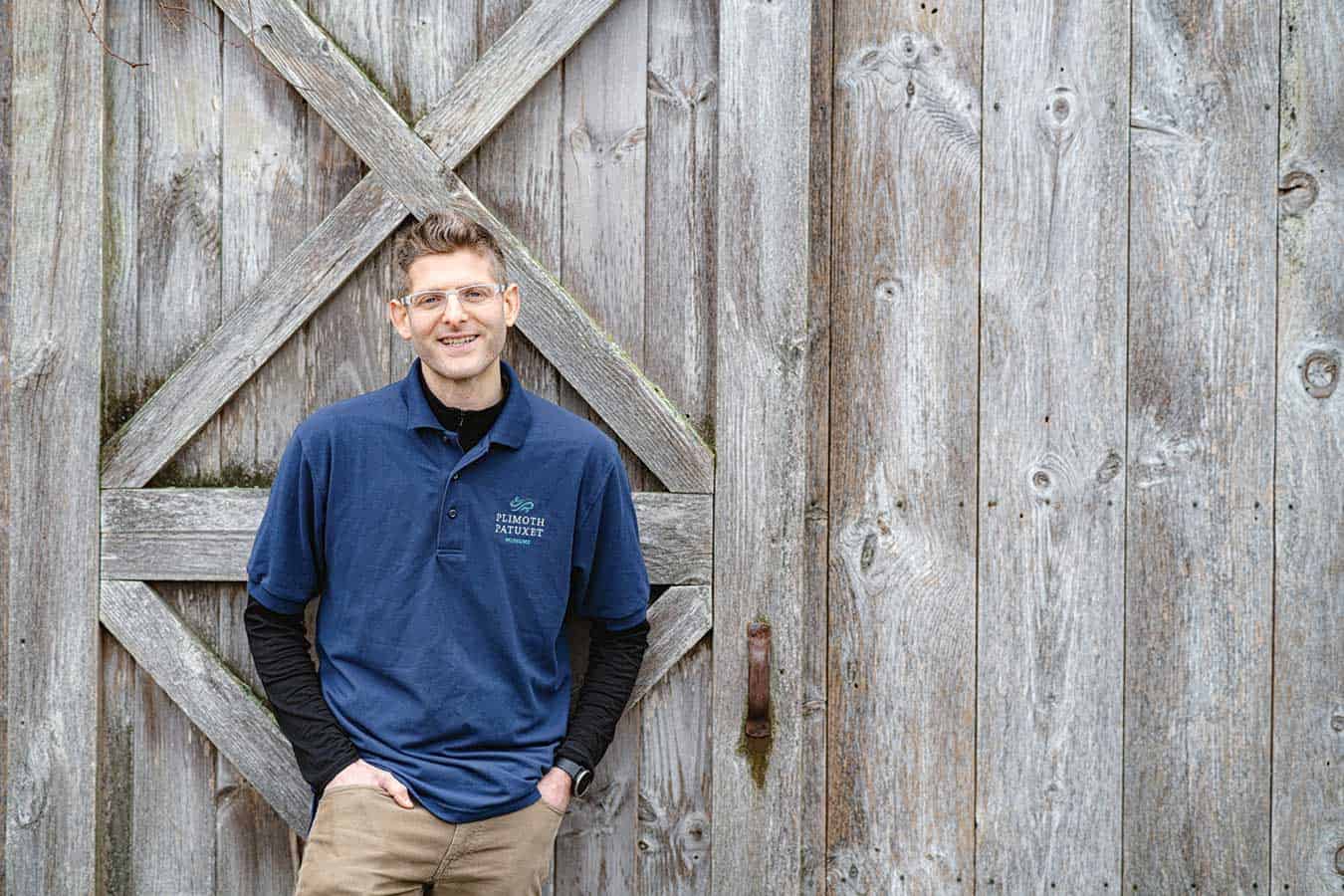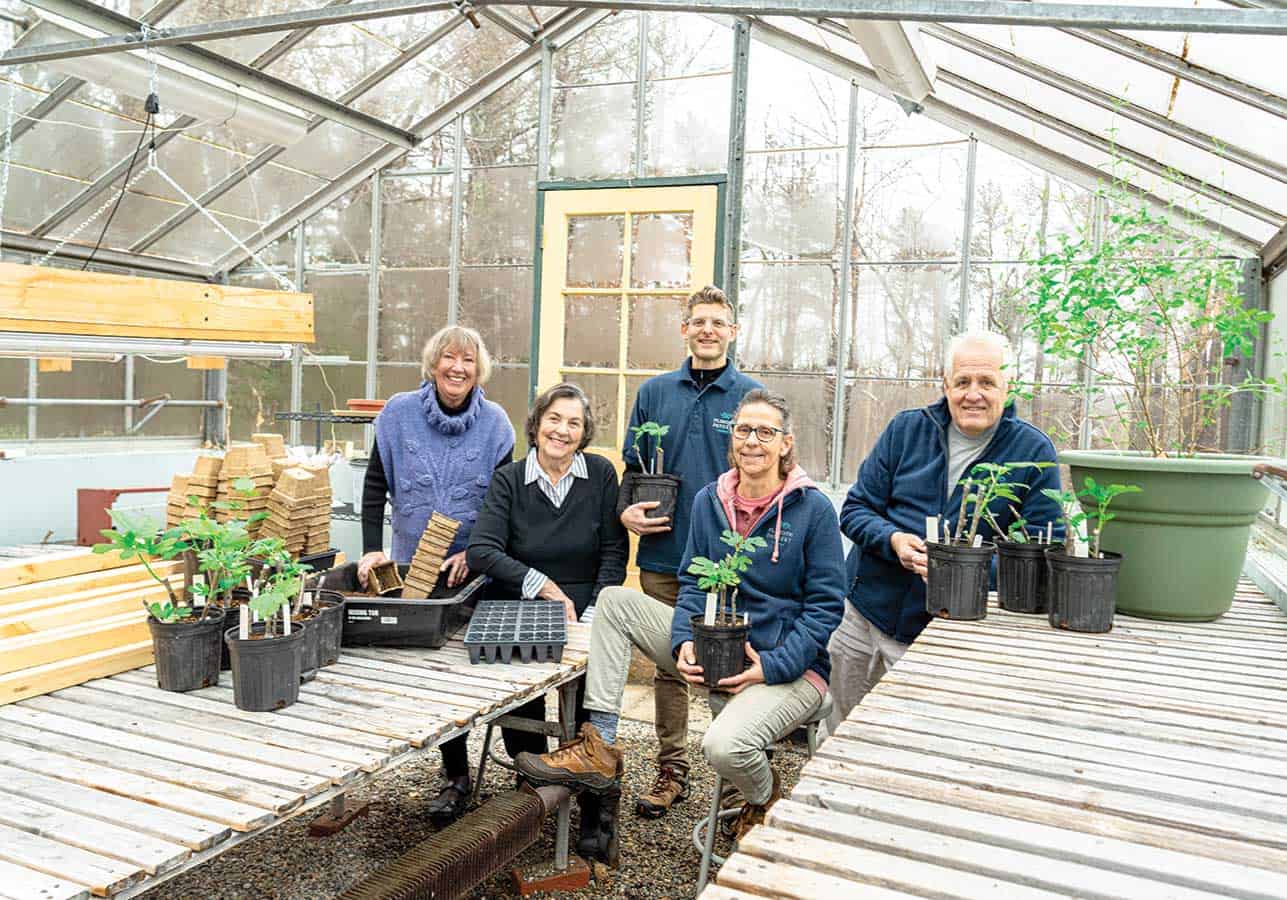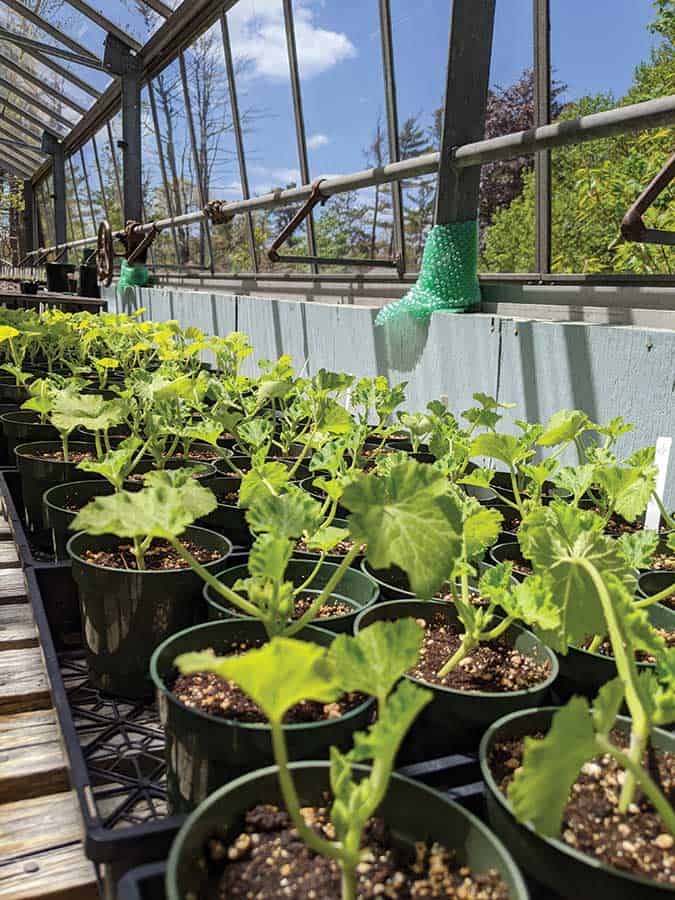Director and Curator of Museum Gardens and Landscapes at Plimoth Patuxet Museums
By Maria Allen Photography by Jack Foley
Spring is a particularly busy time of year for the horticultural team at Plimoth Patuxet Museums in Plymouth, as preparations are made for the museum’s April opening and Annual Spring Heirloom Plant Sale. Heading up this department is Joshua Meyer, Director and Curator of Museum Gardens and Landscapes. Meyer is responsible for overseeing all of the landscape features on the property as well as an onsite greenhouse where plants are grown from seed. Meyer also works closely with museum historians to leverage the unique landscape to support historically accurate storytelling and create an enjoyable visitor experience.

Have you always enjoyed gardening?
I’ve been gardening since I was about 5 years old. My parents encouraged me by giving me my own plots in the garden and then actively supporting my interest throughout my childhood. I grew up in a seaside neighborhood in Maine, which was much like the South Shore. My parents’ backyard and massive vegetable garden abutted the walking path to the town beach, and I fondly remember my dad talking with passersby about all things gardening.
Where did you go to school and what was your area of study?
As a teenager I took career exploration quite seriously, and was lucky to discover landscape architecture as a discipline for supporting my interests in natural sciences, design and community building. I loved the idea of designing spaces for a purpose based on the needs of people and the surrounding environment. I completed the landscape architecture program at Temple University in Pennsylvania and did further training in the form of master’s degrees in sustainability (University of Exeter, UK) as well as library and information science (Wayne State University).
What is a typical spring work day like for you?
In spring, my department is focusing on executing all of the plans and goals we developed during the offseason after careful research and feedback. The museum landscape makes its biggest transformation during this season, as we grow plants, shape beds, create new spaces, manage difficult vegetation and install vegetation. As you can imagine, I spend a lot of time out in the field working with various staff and our wonderful horticulture volunteers.

What are a few of the unique aspects about the gardens at Plimoth Patuxet?
What I enjoy about the gardens are the plant specialties. In the English Village, for example, we grow vegetables and herbs that the Pilgrims would have brought over on the Mayflower. It’s also important to consider that plants were central to the success of Plymouth Colony through access to plants for food and medicine and building material. The Historic Patuxet Homesite exhibit highlights plants native to the area that are important to Indigenous culture. I’ll add that Plimoth Patuxet is also well positioned, through its mission, to advocate for the use and conservation of native plants. We are certainly a very unique museum in this regard for the context and scope of our plant collections.
Can you tell me about the “kitchen gardens” in the English Village?
The museum does an excellent job of helping the public understand the importance of plants for everyday life in the 17th century, from medicine to cooking. Before modern-day botanical gardens, medieval physic gardens in large cities and at universities promoted medicinal plants and the teaching of botany. Because successful apothecaries relied on access to medicinal plants, nearby gardens cultivated the most essential medicinal products including perfumes, confections, spiced wines and herbal remedies. While there are no records of apothecaries in the early Plymouth Colony, museum historians assume that housewives took on this role for their families, growing medicinal herbs in their kitchen gardens. Part of the visitor experience is learning about the various plants in each of the house gardens and their many uses.
What influence did Frederick Law Olmstead have on the landscape design at Plimoth Patuxet Museums?
Frederick Law Olmsted’s successor firm, the Olmsted Brothers, were hired in the 1920s by the Hornblower family to create the gardens for their Country Place Era estate. When the family transferred ownership to the museum in the 1950s the firm was hired once again to assess the landscape in order to accommodate visitors as a public campus. Features still visible today are terracing, stone walls, a tea house structure, trout pond, and very old specimen shrubs. The formal Hornblower Garden, shaped by the family’s longtime gardener Jesse Brewer, notable landscape architect Mary P. Cunningham, as well as the Olmsted Brothers, is a popular site for weddings.
Why is it important to preserve heirloom plant varieties?
By committing to growing heirloom varieties in our period gardens we: ensure species diversity, which in turn increases resilience and crop survival rates; develop a population of species adapted to our specific geography, which over generations adapt natural defenses to certain diseases, pests, and weather patterns and thus require less chemicals; create a seed selection and collection program that favors the tastiest and well-formed plants; teach the public about period garden techniques, which cannot be achieved with hybrid varieties; and advance our mission of understanding those who lived in the 17th century, as heirloom plants tell the stories of the people who grew them and the place that they farmed.
Speaking of native plants, I hear you enjoy foraging for wild beach plums. Do you have secret spots where you go?
The state and town beaches and seaside parks along the New England coast do a great job in native planting projects pertaining to the coastal dune ecologies, to which the beach plum belongs. Without being too specific and stealing anyone’s secret spots, I’d suggest exploring these types of spaces. Pilgrim Memorial State Park in Plymouth has a great population for foraging.
Do you have any tips for people who are interested in getting into gardening?
We are always looking for new volunteers! It’s a great way to jump into a community gardening environment. I also host several Ask the Gardener Zoom sessions throughout the year for a Q&A on gardening. You can visit the museum’s website for more information.
But on a higher level, consider what you hope to gain from gardening. Gardening is very therapeutic. It’s an outlet for creativity, expression, problem solving, and control. It’s the perfect hobby for anyone looking to connect to life and to see the fruits of their labor by honing their skills in science and art. The thing I love about gardening is that it doesn’t require any formal training. And the best gardeners I know had the knowledge passed down to them by a parent or grandparent, aunt or uncle. It’s an intergenerational hobby and often shared by family and neighbors. You can read and study all you want, but gardeners become great by applying the knowledge in the field year after year. You best learn by experience and trial and error.
What do you find most exciting about your work?
I really enjoy our responsibility as museum professionals in educating the public about 17th-century New England life. Plants are an essential part of the story for both the English and Indigenous communities, and I enjoy telling these stories in creative ways.

Spring Heirloom Plant Sale
Don’t miss Plimoth Patuxet Museum’s annual Spring Heirloom Plant Sale. Coordinated by horticultural team members and a dedicated group of community volunteers, this event offers a unique opportunity to purchase the same varieties of period heirloom herbs and vegetables that are also grown in the museum exhibits.
The plant sale takes place over the course of two spring weekends,
May 21,22,28 & 29, 8 a.m. – 1 p.m.,
137 Warren Avenue, Plymouth, 508-746-1622, plimoth.org.
